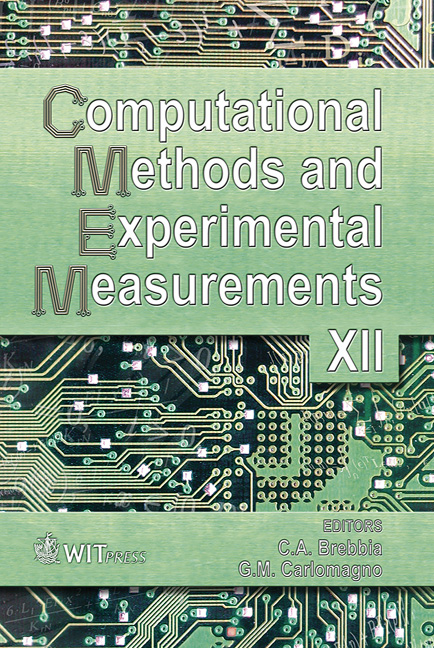Dynamical Problems In The Free Hexagon Method
Price
Free (open access)
Transaction
Volume
41
Pages
10
Published
2005
Size
541 kb
Paper DOI
10.2495/CMEM050571
Copyright
WIT Press
Author(s)
P. Procházka
Abstract
Numerical methods seem to be the cheapest tool for assessing different types of structures. If the theory of damage should be involved into the formulation of the problem to be solved, special treatment is required. The methods, which are extensively used, start with realization of the trial body by a continuum. For example, we can name \“Cohesive zone method”, which deals with Barenblatt's theory. In our problem such methods are on one side uneasily applicable and on the other side exhibit unreal behavior, according to a couple of test examples. This is why test experiments have been carried out to get knowledge about a reasonable approach for solving the problem. The free hexagon method seems to be very promising. First, the method will be described and basic formulas will be derived, and then some applications to rock bumps will be presented. In comparison with some previous works of the author of this paper, the method presented here involves a time-dependent problem with Newtonian forces, which are caused by contact forces of moving particles. It simplifies the body of the earth (soil) to a set of hexagons, which are, or are not in mutual contact. The material properties of the hexagons are determined from the state of stresses. In this paper we adjust the idea of PFC (particle flow code), which starts with balls instead of hexagons and dynamical equilibrium, while in our case the static equilibrium is considered. The hexagons represent a typical shape of the grains the earth consists of. The model proposed in this paper may, in contrast to modern numerical methods (FEM, BEM, etc.), enable one to disconnect the medium described by the balls, when needed (e.g. providing certain requirements on tensile strength is violated). The most natural contact conditions - Mohr- Coulomb hypotheses - may be simply introduced and, after imposing such contact conditions, the localized damage, or "cracking" can be discovered. The stability then depends on the "measure" of the touched zone.
Keywords





